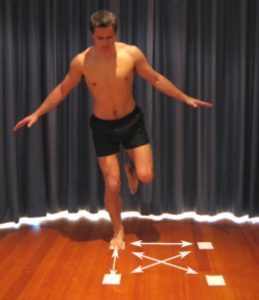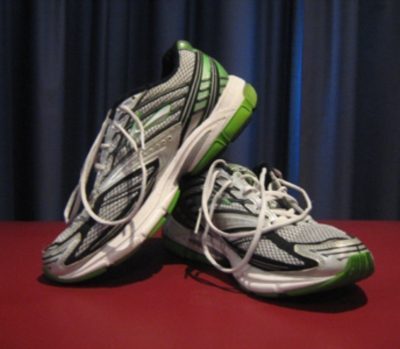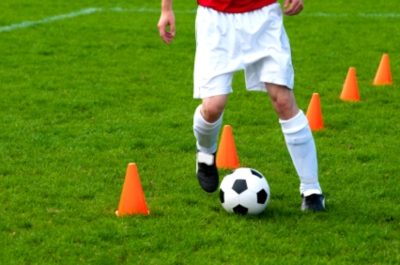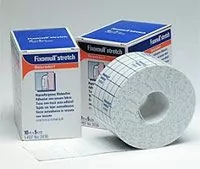Sports Injury Prevention
Updated:
Not all sports injuries are preventable, however, there are a number of injury prevention strategies that can be applied across most sports, which can help decrease the risk of sustaining a serious injury.
The following are our Top Sports Injury Prevention Tips. Many of these tips will not only help decrease the risk of injury (and therefore increase your time on the playing field), but they will also help improve athletic or sporting performance.
Address Past Injuries
One of the biggest risk factors for sustaining an injury is if you have had that particular injury in the past. One of the main reasons why this is the case, is that patients frequently fail to fully rehabilitate their injuries. Although pain may have long past, and return to sport occurred, unless a full rehabilitation program has been completed (and the physiotherapist has discharged the patient), then there is a strong chance that strength, control, range of movement, muscle length or subtle functional deficits still exist. This can result in not only a recurrence of the original injury, but also a new injury to a different part of the body due to changes in the way the body moves.
To ensure an optimal outcome and assist sports injury prevention, make sure you complete your rehabilitation through to the end, under close guidance from your physiotherapist. If you have had an injury in the past that was not fully rehabilitated, then get it assessed by a physiotherapist now, to identify if any problems still exist and for the implementation of an appropriate treatment and exercise plan. Finally, ensure you continue to maintain good strength, range of movement and control of those body parts that have been injured in the past.

Use Appropriate Equipment
The use of inappropriate equipment (or failure to use appropriate equipment) can contribute to injury. Ensure you use properly fitted and adjusted equipment that is appropriate for your body to assist sports injury prevention. In addition, regularly inspect your equipment and update it if you find it is too old or worn out. This includes things like replacing your running shoes every 600-1000 kilometres, ensuring all your football boot studs or cricket shoe spikes are in place and securely fitted, ensuring protective equipment (such as bike helmets, shin guards, knee pads etc) are in good working order and securely attached, as well as having your bike set up correctly, tennis racquet grip sized correctly and maintaining good ergonomics in the car, office or at school.
The use of appropriate taping techniques or an appropriate brace can also play an important role in injury prevention, particularly when returning to at risk activities (such as sport) following a previously rehabilitated injury .
Recommended Reading
- Bike Set Up
- Choosing a School Bag
- Choosing a Shoe
- Ergonomic Computer Set Up
- Mobile Phone Ergonomics
- Taping Techniques

Gradual Changes
When it comes to increasing your training or competition workload, do so only in gradual increments. Likewise if you are starting out fresh, aim to gradually ease into things. Certain structures, such as bones, cartilage and tendons, need time to adapt to a new physical workload. Follow the 10% rule to minimise the risk of overuse injury to these structures. This means only increasing one variable (duration, intensity, frequency) by no more than 10% each week. You should also aim to avoid excessively heavy training sessions on consecutive days, having at least 48 hours between these sessions to allow your body to fully recover. Plan ahead so that you can carefully structure your training and competition schedule to allow for only gradual changes in your physical workload.

Respect Pain

Members Only ContentBecome a PhysioAdvisor Member to gain full access to this exclusive content. For more details see Become a Member. Already a member? Login Now
Get it Assessed

Members Only ContentBecome a PhysioAdvisor Member to gain full access to this exclusive content. For more details see Become a Member. Already a member? Login Now
Perform Injury Prevention Exercises
Injury prevention exercises specific for your particular sport, your particular body type and your particular past or current injuries, are an important part of any training program. Included may be things like core stability exercises, balance or proprioceptive exercises, pelvic stability exercises, scapular stability exercises or specific stretches for certain muscles or joints. See your physiotherapist who can tailor an individualized program appropriate to the demands of your sport and your body’s requirements.

Warm Up Appropriately
One of the best ways to prevent injury is with an effective warm up prior to sport or activity. A proper warm up should be at least 15-20 minutes in duration and should progress through a variety of stages and warm up activities. Avoid focusing on long sustained static stretches in the warm up as this can result in decreased athletic performance, a lowering of your heart rate and may actually increase the risk of injury. A warm up should aim to elevate the heart rate, actively loosen the joints and muscles to be used during the sport, as well as stimulate the brain and activate the movement patterns required in the activity.
Recommended Reading:

Cool Down, Stretch & Recover

Members Only ContentBecome a PhysioAdvisor Member to gain full access to this exclusive content. For more details see Become a Member. Already a member? Login Now
Nutrition & Hydration to Assist Injury Prevention

Members Only ContentBecome a PhysioAdvisor Member to gain full access to this exclusive content. For more details see Become a Member. Already a member? Login Now
Improve Your Technique
Having the correct technique and posture for sport is important to improve the efficiency of your movements and to minimise undue stress on tissues. Biomechanical errors have been shown to contribute to injuries in a number of sports. Have your sporting technique biomechanically assessed by a specialist physiotherapist or coach and work closely with them to make improvements. Avoid making major changes too rapidly though, as this can also increase the risk of injury. Particularly when it is combined with an increase in training volume (which is often the case when you are trying to make changes to your technique).
Recommended Reading:

Be Aware of the Conditions

Members Only ContentBecome a PhysioAdvisor Member to gain full access to this exclusive content. For more details see Become a Member. Already a member? Login Now
Play and Train to Your Own Ability Levels
The risk of injury increases when people participate in sporting activities in which they lack the experience or skills. Be aware of your own ability level and do not put yourself in risky situations that you are unaccustomed to. For example, avoid playing rugby or ice hockey without knowing how to take a tackle or knock, avoid skiing on advanced slopes with only novice experience, if underage, avoid playing in older competitions in contact sports etc.

Sport Specific Injury Prevention Tips
For sport specific injury prevention tips, click on the appropriate link below:
- Cycling Injuries
- Running Injuries
- Skiing Injuries
- Snowboarding Injuries
- Swimming Injuries
- Throwing Injuries
 Recommended Reading to assist Injury Prevention
Recommended Reading to assist Injury Prevention
- View detailed information on Physiotherapy Exercises to aid injury prevention and rehabilitation.
- View detailed information on improving your Bike Setup.
- View detailed information on Choosing a School Bag
- View detailed information on Choosing a Shoe.
- View detailed information on Do i Need Orthotics?
- View detailed informaion on Ergonomic Computer Setup
- View detailed information on improving your Posture.
- View detailed information on a Return to Running Program.
- View detailed information on Safe Lifting.
- View detailed information on Taping Techniques.
- View detailed information on Warming Up and Cooling Down.
- Unsure of your injury? View our Injury Diagnosis Guides.
 Physiotherapy Products for Injury Prevention
Physiotherapy Products for Injury Prevention
To purchase physiotherapy products to assist in sports injury prevention, click on one of the above links or visit the PhysioAdvisor Shop.
 Find a Physio to assist with Sports Injury Prevention
Find a Physio to assist with Sports Injury Prevention
Find a physiotherapist in your local area who can assist with sports injury prevention.
Become a PhysioAdvisor Member

Link to this Page
If you would like to link to this article on your website, simply copy the code below and add it to your page:
<a href="https://physioadvisor.com.au/health/injury-prevention”>Sports Injury Prevention – PhysioAdvisor.com</a><br/>PhysioAdvisor offers detailed information on sports injury prevention including tips to decrease the risk of injury during sport and improve performance.
Return to the top of Sports Injury Prevention.








